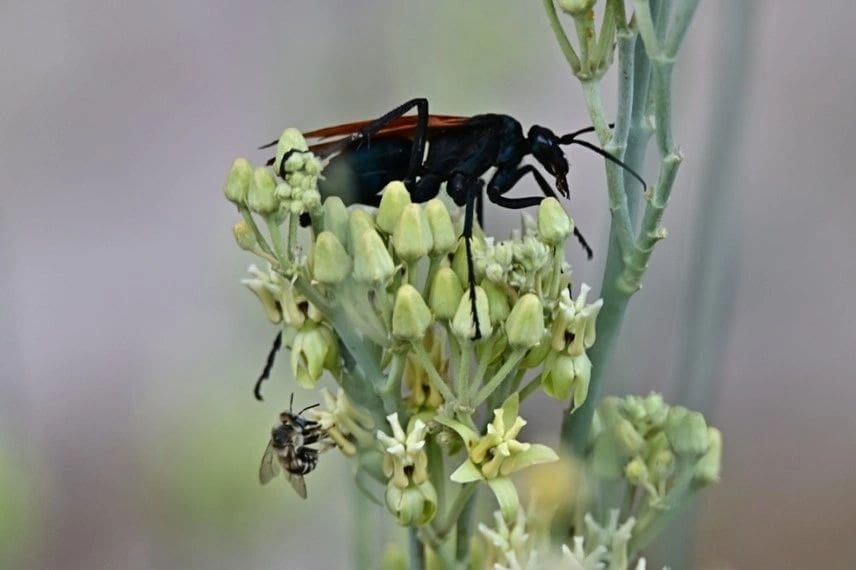The Pepsis Wasp (and a bee) on Desert Milkweed

When can you hear a wetlands park plant before you see it?
When the plant is a Desert Milkweed (Asclepias subulata) in bloom, buzzing and dancing with insect pollinators! Wasps, bees, hoverflies, and butterflies (especially the Monarch and its look-alike Queen butterfly) all flock to this native member of the milkweed family for the nectar and habitat it supplies.
Though Pepsis Wasps (Pepsis sp., also called Tarantula Hawks) paralyze spiders to feed their larvae, the adults feed on nectar. They benefit the milkweed by pollinating its flowers as they feed, and in fact are known as the best pollinators of milkweed plants.
Milkweed pollen is packaged in wishbone-shaped “pollonia” within the flowers. The pollonia clip onto a visiting insect’s legs and unclip when it visits the next flower. Smaller insects may actually lose the leg the pollen package attaches to, but bigger ones, like the Pepsis wasp in our photo, have sturdier legs!
Watch for the almost leafless, slender gray-green stems of Desert Milkweed plants in disturbed soil and along roadsides in Southern Nevada’s low elevations. Listen for loud buzzing along the trail. Sometimes so many pollinators are on a single plant that it seems ready to fly off! A great place to check out the plants is near the atrium by the employee parking lot at the Park’s Nature Center..
PS: The small bee in our photo is unidentified, but its black and white stripes tell us it is not a honey bee!
Please enjoy these YouTube videos of Pepsis Wasps feeding on nectar:
1.
2.
– Chris Leavitt, President; photo by Philip Martini
